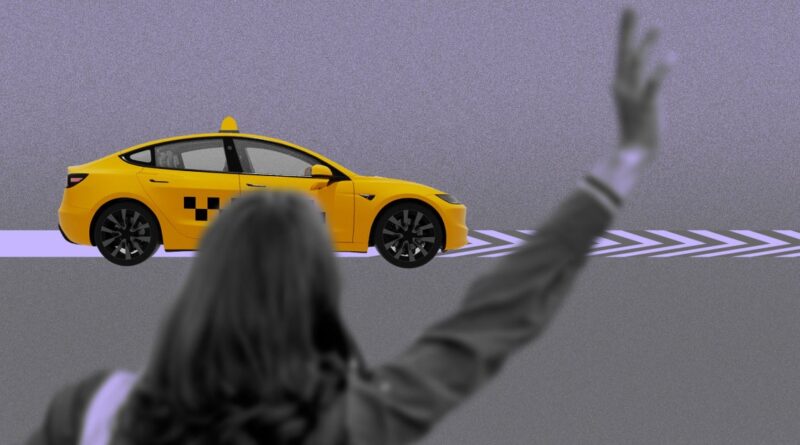Elon Musk’s robotaxi fantasy is starting to unravel
Last night, Elon Musk did what he does best: promise “millions” of autonomous Tesla vehicles would be on the road by the end of next year.
It’s become a familiar refrain. Every year since at least 2020, Musk has promised Tesla vehicles will finally achieve their full self-driving capabilities. And every year, those promises fail to come to fruition. Tesla has come under investigation for numerous fatalities involving its vehicles and its driver assist features, Autopilot and Full Self-Driving. His rivals continue to outpace him. And Musk has even acknowledged his overly optimistic outlook by labeling himself “the boy who cried FSD.”
“I predict that there will be millions of Teslas operating autonomously, fully autonomously, in the second half of next year.”
That fantasy of millions of autonomous Tesla vehicles is getting closer to reality, Musk promised again last night. You’ll be able to sleep in your car and wake up at your destination by the end of this year, he vowed. As Tesla’s financial problems mount, the billionaire CEO seems eager to shift focus away from the drab realities of running a car company amid a tumultuous global trade war, and toward a more idealized vision of a future-focused company producing millions of robots, both humanoid and car.
But that fantasy is looking increasingly out of reach, especially as Musk confronts the limitations of Tesla’s technology, and the current political reality he helped usher in.
During the call, it was clear that Musk is intent on continuing to pursue the goal of deploying fully autonomous vehicles using a camera-only sensor suite and an end-to-end neural network that’s been trained on billions of driving miles from the company’s fleet.
Tesla doesn’t have a PR department and stopped responding to questions from reporters almost six years ago. So often Musk’s claims about full self-driving go completely unchallenged, and rarely is he asked to defend his positions. Since his acquisition of Twitter, and its rebranding as X, Musk has been able to count on his legion of fans to amplify his promises about autonomous cars to the broader world, with little pushback.
Tesla’s earnings calls remain the last place where Musk fields questions about the company’s technology — and often those questions are packaged with a lot of fawning and ingratiating remarks from financial analysts who have developed parasocial relationships with the billionaire CEO over the past decade. But last night, Musk faced several pointed queries about Tesla’s plans to roll out driverless cars in Austin in just a few short months, as investors continue to struggle to parse reality from fiction.
As Tesla’s financial problems mount, the billionaire CEO seems eager to shift focus away from the drab realities of running a car company.
Last year, Musk said that Tesla would rollout “unsupervised” robotaxis in Austin, Texas starting in June 2025. And in the call last night, Musk stuck to that deadline, but added a little more color about what to expect. He said the paid ridehailing service would consist of 10-20 Model Y vehicles with remote operators in case any of the cars get stuck. So unsupervised, but also teleoperated in case of emergency.
Tesla’s robotaxis will have “audio input” to listen for approaching emergency vehicles — well, at least some of them will, according to Ashok Elluswamy, VP of Autopilot and AI software. “The customer facing versions don’t have audio input, but the version that’s going to be in Austin will have audio input,” he said.
Musk has long promised Level 5 autonomy, which describes driverless vehicles that can travel anywhere, under any conditions, without limitations. But last night, he corrected himself: there will be some limitations. A “blizzard in Manhattan,” for example, may be off limits for Tesla’s self-driving taxis. In other words, geofencing, a practice used by every other operator of autonomous vehicles, but typically shunned by Musk because it conflicts with his vision of an unfettered, decentralized fleet of driverless cars free to roam anywhere they want.
“It’s increasingly obvious that there’s some value to having a localized set of parameters for different regions and localities,” Musk said.
One analyst asked about the reliability of Tesla’s cameras when confronting sun glare, fog, or dust. Musk claimed that the company’s vision system bypasses image processing and instead uses direct photon counting to account for “noise” like glare or dust.
Other robotaxi operators have determined that cameras aren’t enough to reliably guide a driverless car through a complex environment. Companies like Waymo, which currently is doing 200,000 fully autonomous taxi trips each week, rely on a sensor suite that includes lidar, radar, and ultrasonic sensors for redundancy in case the vehicle runs into any difficulty. Musk calls lidar “a crutch.”
During the call, Musk mocked Waymo’s approach as costing “way more money” than his company. Tesla builds its own cars, its own computers, and its own sensors. It’s more vertically integrated, which Musk argues give it the “leg up” over its rivals. Of course, he made no mention of the major hardware replacement that millions of Tesla vehicles will require in order to achieve their promise of full self-driving — a process he previously described as “painful” and expensive.
“It’s increasingly obvious that there’s some value to having a localized set of parameters for different regions and localities.”
“Teslas are… probably costing a quarter or 20 percent of what a Waymo costs and made in very high volume,” Musk said. “So, you know, ironically, we’re the ones that made the bet that a pure AI solution with cameras… is the right move.”
Hurdles remain, Musk admitted. Tesla will have “10 million autonomous cars” on the road in a few years, unless “we’re blocked by regulatory situations.” What sort of regulatory situations, he didn’t enumerate. Right now, there’s nothing standing in Tesla’s way from deploying dozens or even hundreds of driverless cars if it chooses. The Trump administration, led by Musk’s Department of Government Efficiency, have slashed thousands of jobs, including roles in regulatory agencies investigating the safety of Tesla’s self-driving systems.
Tariffs and the rising trade war could be a sticking point. Tesla’s Cybercab production could be disrupted after the company reportedly paused component imports from China thanks to President Trump’s 145 percent tariff on the county.
Waymo’s fully driverless cars are currently operating in four cities, including Austin, with more on the way. Tesla has yet to demonstrate its cars can operate autonomously on public roads, preferring to stick to controlled demonstrations on closed lots or private roads.
But the real proof is right around the corner — if you continue to believe in Elon Musk’s promises.





